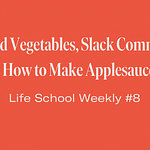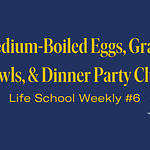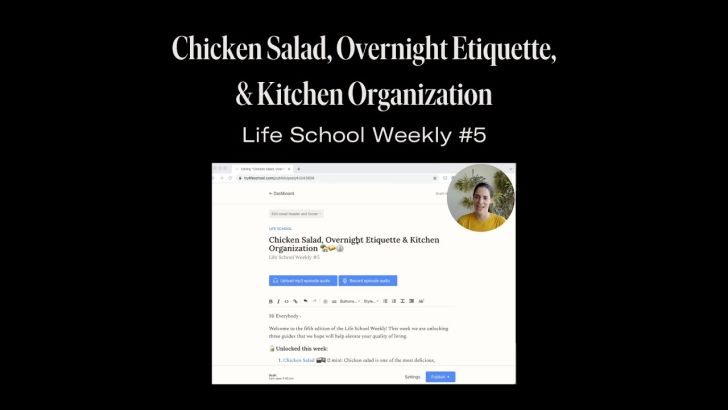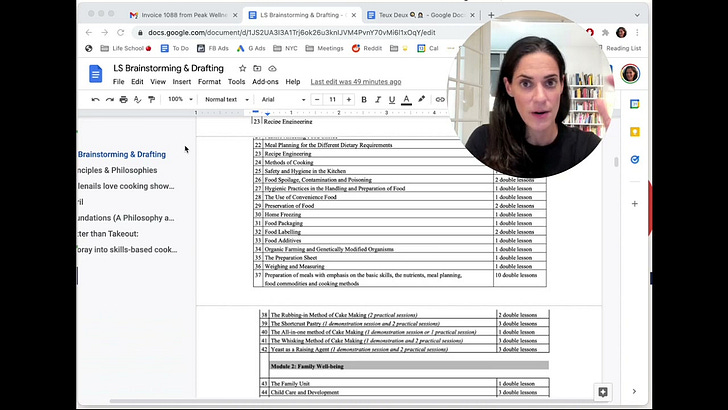Today’s lesson is 720 words, a 2 min 52 sec reading time. Subscribe here.
📍 Introduction
Preparing salad ingredients requires some upfront labor. They must be purchased close to the prep date to ensure freshness and then afterward stored, washed, dried, trimmed, chopped, and eventually tossed. It’s a lot of work, and one of the main reasons restaurant salads can be quite pricey.
The good news? You don’t need much gear to carry out all these tasks. Additionally, a few investment items can significantly increase the enjoyment and efficiency of various salad prep tasks.
Here are our recommendations.
⚙️ Essential Gear:
Very sharp Chef’s knife (~8 inches) - a workhorse for chopping, slicing, and mincing. Your most important tool by far. A good chef’s knife will last a lifetime and tackle ~80% of your vegetable prepping needs. You’re better off having one solid, sharp chef’s knife than an entire block of dull, cheap knives of different sizes. (See below for some product suggestions.)
Paring Knife - typically used for smaller items or intricate work (e.g., coring, peeling)
Salad spinner - helpful for drying leaves so that dressing can stick. It’s best to have one that can fill with water. This allows you to submerge the leaves & swish to remove the grit.
XL chopping board - wood is best as it is gentler on knives. These can be expensive, but like chef’s knives, they can last a lifetime if treated properly. If you aren’t ready to invest in wood, plastic is fine. Try to avoid mats as they slip.
Kitchen/Paper Towels - for storing lettuce
Large bowl - preferably wide & shallow, which is ideal for tossing a salad quickly and evenly. Wide dishes are also beautiful for serving.
Large spoons - wood is best, followed by plastic or melamine (metal can bruise or crush the lettuce)
👍Recommended Gear
Knife Sharpener: If you don’t regularly take your chef’s knife to a professional sharpener, you should have a knife sharpener on hand. Use it about once a month. A knife is only as good as the edge of its blade, and the edge of the blade is only as sharp as you keep it. Knives dull within a few uses, so it’s critical to sharpen regularly. We recommend sharpening every few weeks if you can, and honing between sharpenings.
Honing rod: this is what keeps the blade of your knife in alignment. Steel is softer than you would think, and knife edges dull & lose their alignment with each use. A honing rod fixes this quickly. Note that this does not sharpen the blade.
Serrated knife (e.g., bread knife or a smaller one like these) - suitable for slicing tomatoes (and bread)
Veggie peeler: for peeling root vegetables (e.g., carrots, cucumbers) & some fruits (e.g., apples). Also useful for shaving parmesan or making carrot ribbons.
📝 Notes, Tips & Tricks:
You only need three knives to handle almost all ingredients: paring (small), serrated (bread) & chef’s (large).
Of these three knives, the only one worth investing in is the chef’s knife. This will need to be sturdy, sharp, and balanced to work through dozens of tough veggies quickly and safely.
If you have a butcher block of old, poor-quality knives, consider trading most of them in for one great chef’s knife. Fewer, better, knives will be most useful.
A bigger cutting board is helpful when processing several vegetables. You use the board as a workspace and place the vegetables around the area.
Wood is gentlest on knives & the preferred board type for most experienced chefs. They are also beautiful, quieter, and naturally anti-bacterial. With that said, they are not dishwasher-safe. Furthermore, they require a little extra TLC (e.g., occasional oiling so they don’t crack or absorb odors and stains).
Place cutting boards on a lightly damp kitchen towel to reduce slipping & provide extra sturdiness
You can never have too many kitchen towels. They work well as potholders, trivets, hand & dish driers, counter wipers, lettuce wrappers, and more.
🎓 Further Study:
————-————-————-













Recommended Gear